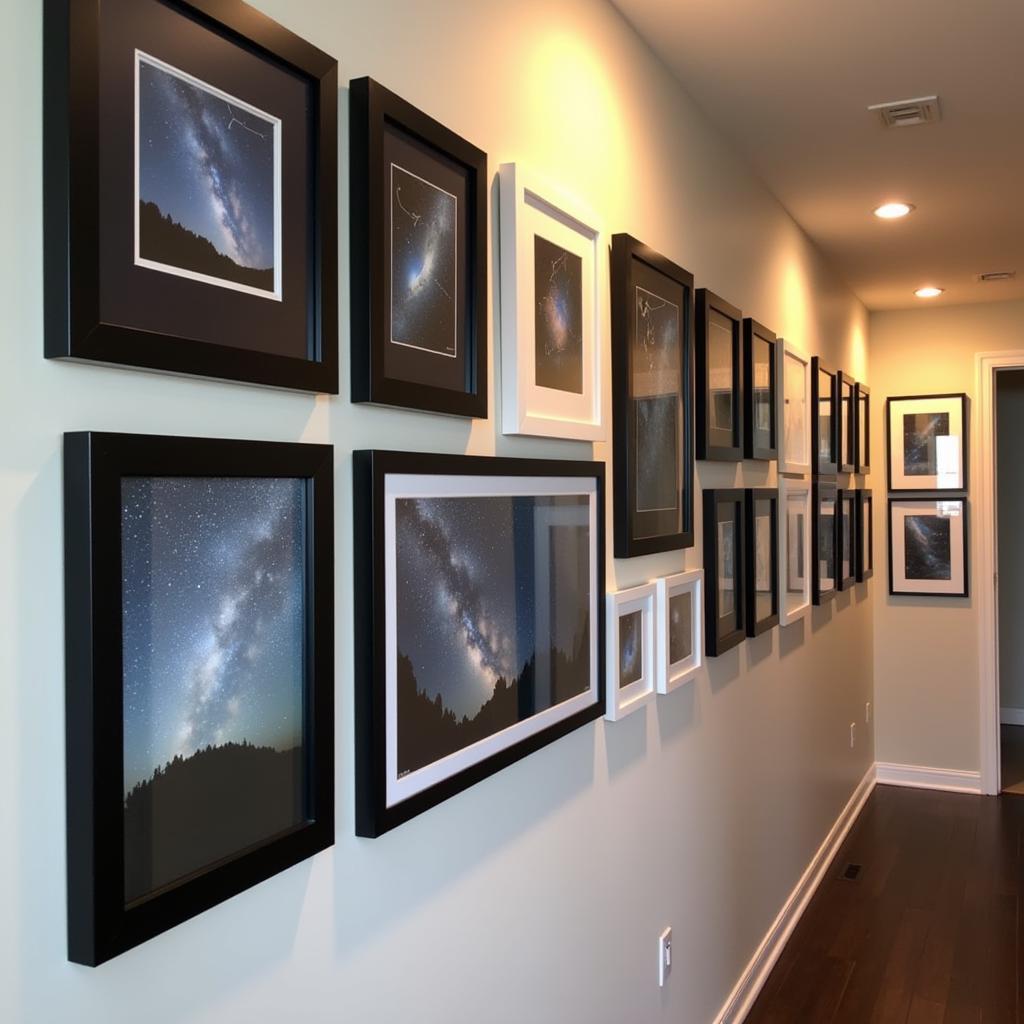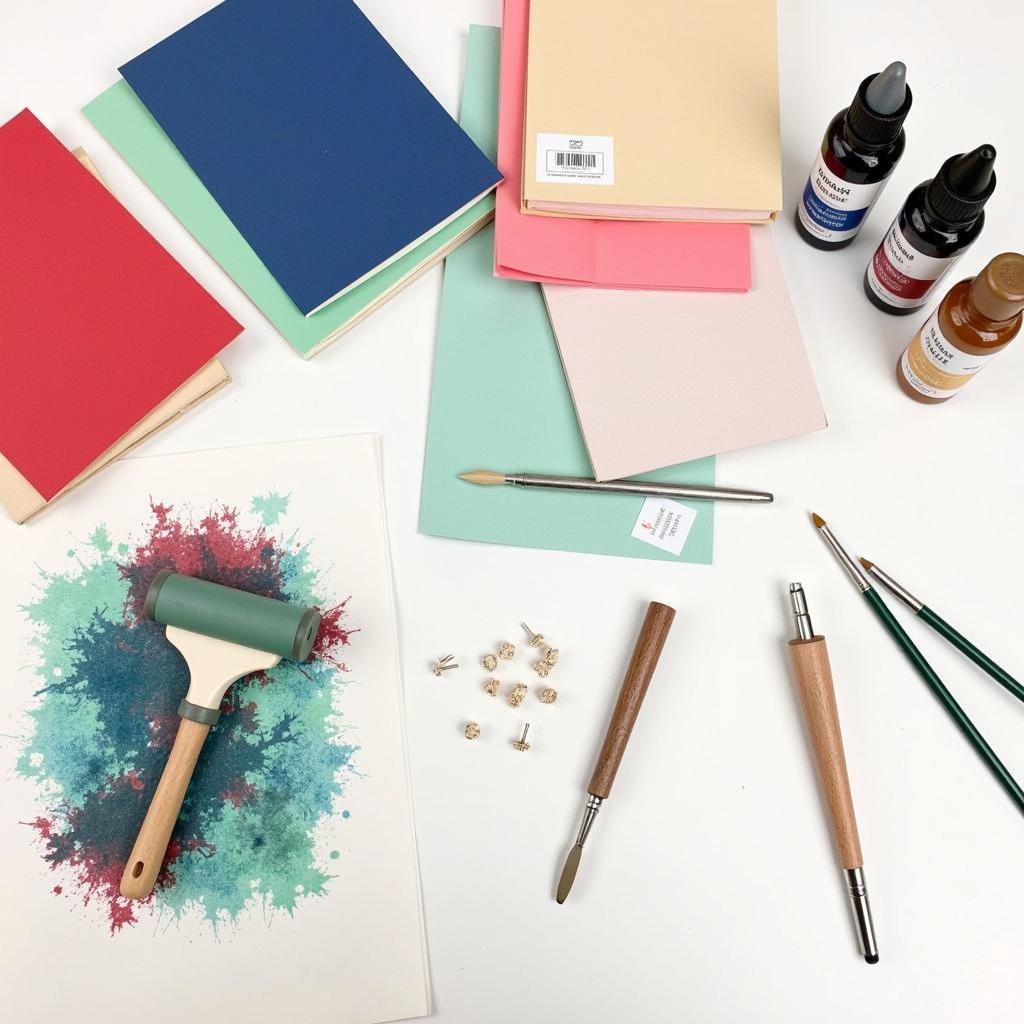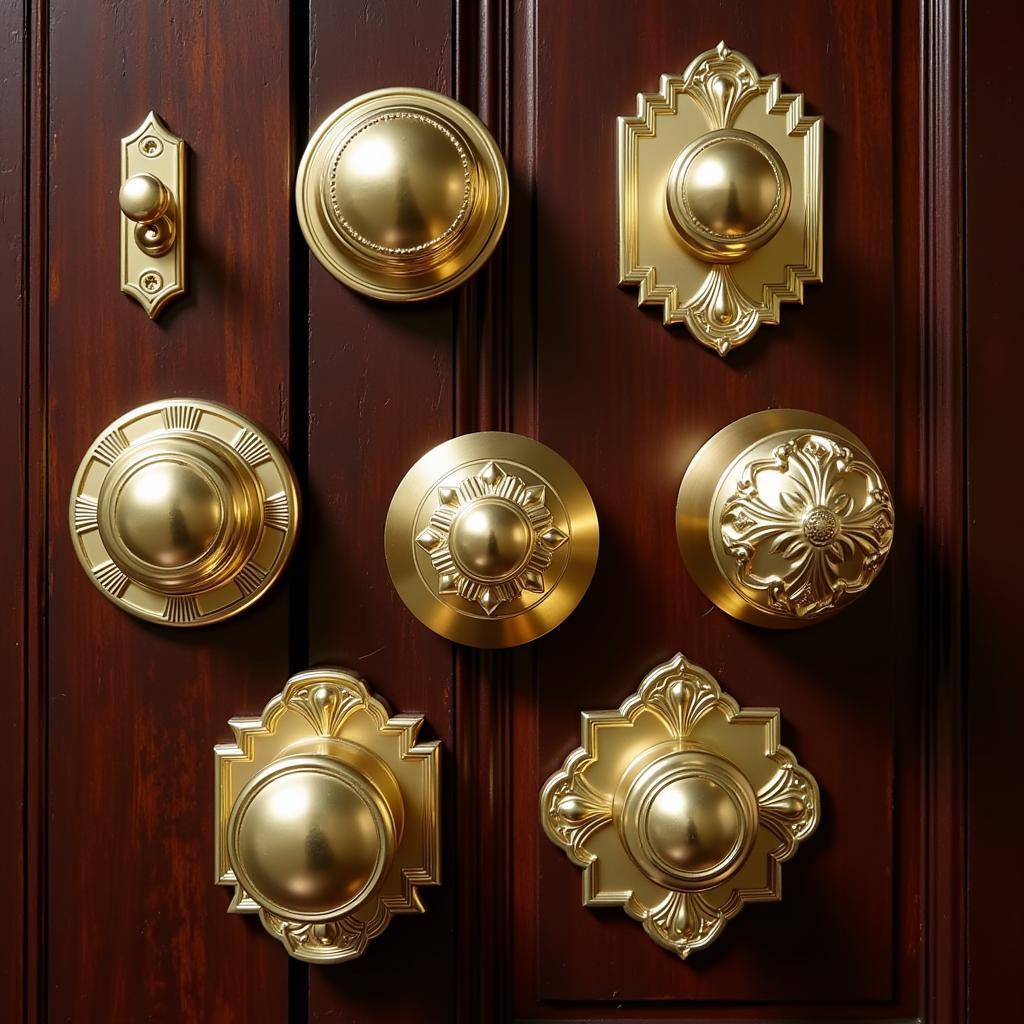Exploring the Magic of Watercolor and Glue Art
Watercolor And Glue Art offers a captivating blend of fluidity and texture, allowing artists of all levels to create stunning visual effects. This unique technique combines the delicate beauty of watercolors with the dimensional properties of glue, opening up a world of creative possibilities. Whether you’re a seasoned artist or just starting your creative journey, exploring watercolor and glue art is a rewarding experience. Let’s dive into this fascinating artistic realm and uncover its secrets. After reading this article, you might just want to grab your art supplies for school and try it out yourself!
Unleashing Your Creativity with Watercolor and Glue Resist
One of the most intriguing aspects of watercolor and glue art is the “resist” technique. This involves applying glue to your paper, letting it dry, and then painting over it with watercolors. The glue acts as a barrier, repelling the paint and creating unique patterns and textures. When the paint dries, the glue adds a subtle raised effect, giving your artwork a three-dimensional quality. Looking for cheap art craft supplies? Check out this resource.
This technique is incredibly versatile, allowing you to create anything from intricate floral designs to abstract landscapes. The key is to experiment with different types of glue and application methods. White school glue works well for creating bold lines and shapes, while clear glue can produce more subtle effects.
Mastering the Basics: Materials and Techniques
Getting started with watercolor and glue art is surprisingly simple. You’ll need a few basic materials: watercolor paints, brushes, glue, and watercolor paper. You can easily find these at any online art supplies store. The type of paper you choose can significantly impact your results. Thicker paper is recommended, as it’s less likely to buckle or warp when wet.
Once you have your materials, the first step is to sketch your design lightly on the paper. Then, apply the glue to the areas where you want the resist effect. Allow the glue to dry completely before painting over it with your watercolors. Remember, the longer you let the glue dry, the more pronounced the resist effect will be. Think of it like creating a dam for the watercolor.
 Basic Watercolor and Glue Art Supplies
Basic Watercolor and Glue Art Supplies
Exploring Different Watercolor and Glue Art Styles
Beyond the resist technique, there are countless ways to incorporate glue into your watercolor paintings. For instance, you can use glue to create textured backgrounds, add dimension to your subjects, or even create unique mixed-media pieces. Imagine creating a beautiful ice cream art and craft project using this technique!
One popular technique is to mix glue directly with your watercolor paints. This can create interesting effects, making the paint thicker and more opaque. Experimenting with different ratios of glue to paint can yield surprising results, allowing you to achieve a variety of textures and finishes.
Another technique is to use colored glue to add vibrant accents to your artwork. This can be especially effective when creating floral designs or abstract patterns. The colored glue adds a pop of color and texture, making your artwork truly stand out.
Creating Depth and Dimension with Watercolor and Glue
One of the most exciting aspects of watercolor and glue art is the ability to create depth and dimension. By layering glue and watercolor, you can build up layers of texture and color, giving your artwork a rich and complex feel.
“Using glue in watercolor paintings adds a tactile element that elevates the artwork beyond the visual,” says renowned artist Amelia Hart. “It allows you to truly engage with the medium and explore new creative frontiers.”
This technique is particularly effective when creating landscapes or still life paintings. By layering different colors of watercolor over the glue, you can create the illusion of light and shadow, making your artwork come alive.
“Don’t be afraid to experiment and push the boundaries of the medium,” advises art educator David Miller. “The beauty of watercolor and glue art lies in its versatility and endless possibilities.”
Conclusion: Embracing the Magic of Watercolor and Glue Art
Watercolor and glue art offers a unique and rewarding way to express your creativity. Whether you’re a beginner or a seasoned artist, this versatile technique allows you to explore a world of possibilities and create stunning visual effects. So grab your supplies and discover the magic of watercolor and glue art for yourself. For more patriotic-themed art ideas, check out our 4th of July art page.
FAQ
-
What type of glue is best for watercolor and glue art?
White school glue or clear PVA glue works well. -
Can I use regular paper for watercolor and glue art?
Thicker watercolor paper is recommended to prevent warping. -
How long should I let the glue dry before painting?
Allow the glue to dry completely, which usually takes a few hours. -
Can I mix glue directly with watercolor paint?
Yes, mixing glue with paint creates interesting textures and opacity. -
Where can I find watercolor and glue art tutorials?
Many online resources and tutorials are available for further exploration.
Common Scenarios and Questions
-
Scenario: The glue is peeling off the paper. Solution: Ensure the glue is completely dry before painting, and use thicker watercolor paper.
-
Question: Can I use other types of paint with glue? Answer: Experimentation is encouraged! Acrylics or gouache can create different effects.
Further Exploration
Explore more art and craft ideas on our website. Check out our guide on cheap art craft supplies for affordable materials.
When you need support, please contact us by phone at 02462573573, email us at danteum@gmail.com, or visit us at Savico Megamall, 7-9 Đ. Nguyễn Văn Linh, Gia Thụy, Long Biên, Hà Nội 10000, Việt Nam. We have a 24/7 customer support team.




